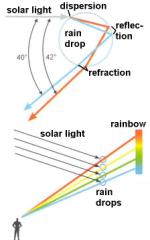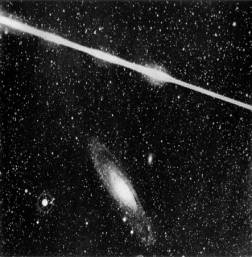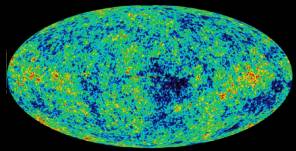

The Venus Transit 2004
... Extended InfoSheet G1
What is LIGHT?

|

Going from Gamma rays, X-rays, UV, Visible light, IR, millimetric to radio waves, the electromagnetic radiation is divided into spectral regions.

Fraunhofer spectrum of solar light. Wavelengths are in angströms (Å). Line C is Hα of hydrogen.
The wavelengths of light are longer than 0.38 micrometer, (3800 Å, blue light) and shorter than 0.76 micrometer (7600Å, red light). For a musician the ratio (1:2) of these boundary wavelengths (or frequencies) is one octave. Our eye perceives thus one octave of electromagnetic oscillations. The 0.5 micrometer radiation has green colour. A series of two thousand waves of green light is one millimeter long. Shorter waves than 3800 Å down to 900 Å are UV radiation and longer waves than 7600 Å (up to 0.1mm) are IR radiation.
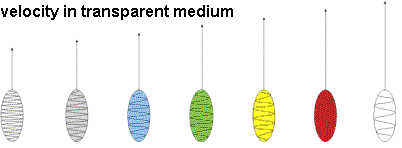
Photons are small packets of energy, which oscillate with frequency ν. Their velocity in vacuum is c = 300 000 km per second. In a transparent medium the velociy is smaller. The energy of photons is hν. h is Planck's constant 6.6 x 10 -34 J s.
Until the middle of the twentieth century, visible light was the only source of information on the Universe. Today, telescopes with ingenious detectors placed on satellites and space probes show us the Universe in all the spectral regions from gamma rays to radio waves. Windows to the Universe have been opened from one octave to 92 octaves.
| All cosmic bodies emit radiation - photons. Gamma photons come from a violent universe. A hot Universe is observed in X-rays. Infrared radiation is emitted by a warm universe (in near infrared) and cold universe in far infrared. Some photons reaching our eyes are less than one thousandth of a second old (lightning, meteors), others are milions of years. In microwaves astronomers observe the oldest light of all, from the time when Universe was 300 000 years old. At that time the Universe became transparent. Since then the Universe (and the wavelengths of radiation) expanded 10 000 times and during the 13 billions years the light has changed into microwave radiation. It is called the cosmic background radiation. In the Cosmos, there are two billion (2 x 10 9 ) relic photons for each protons. They are by far the most abundant photons in the Universe. |
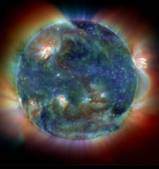 We receive all the energy we need as visible light from our star - the Sun. It is essential for all the life on the Earth. The total energy offered by the Sun to the Earth each second is 180 000 terawatts. By comparison: according to the UN statistics, the whole of humanity consumes 13 terawatts in industry, traffic, at home, in agriculture. We use dirty sources (coal, oil, natural gas) to cover our energy needs. These sources contain also solar energy - solar light accumulated by photosynthesis millions years ago. They are expensive, exhaustible, pollute our planet and gready people wage wars to get them.
We receive all the energy we need as visible light from our star - the Sun. It is essential for all the life on the Earth. The total energy offered by the Sun to the Earth each second is 180 000 terawatts. By comparison: according to the UN statistics, the whole of humanity consumes 13 terawatts in industry, traffic, at home, in agriculture. We use dirty sources (coal, oil, natural gas) to cover our energy needs. These sources contain also solar energy - solar light accumulated by photosynthesis millions years ago. They are expensive, exhaustible, pollute our planet and gready people wage wars to get them.
Have we forgotten the ideal safe thermonuclear reactor on the sky? We neglect the generous solar gift, which is of high quality (= efficiently transformable into any useful form of energy - as heat, electricity, chemical energy). It is absolutely clean (no pollution), eternal (for next 7 milliards years), many thousand times surpassing the needs of humanity, and is free for everyone.


